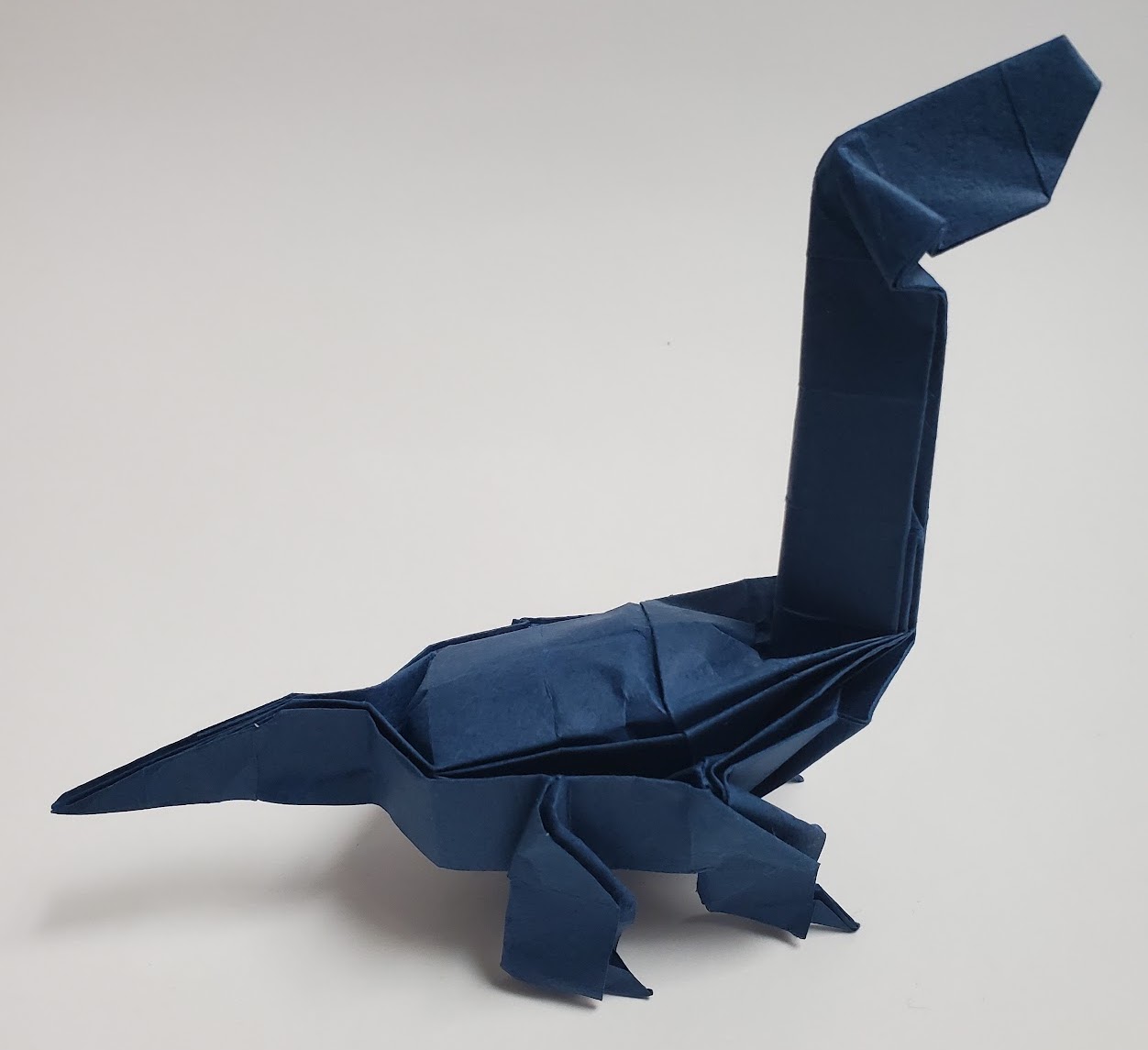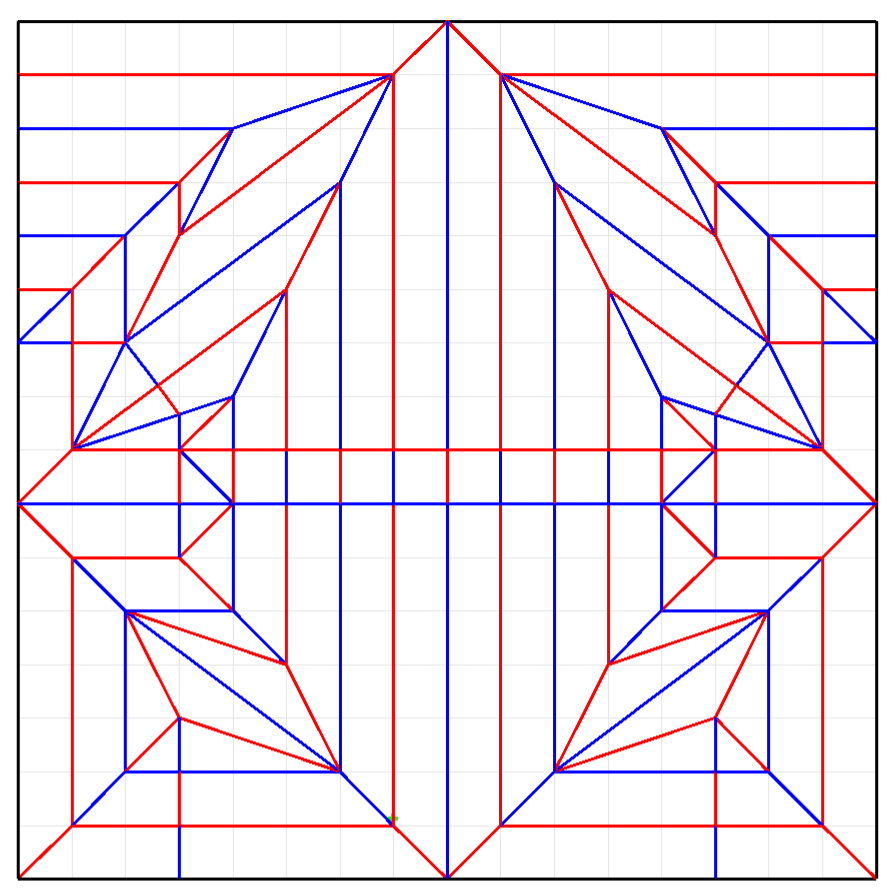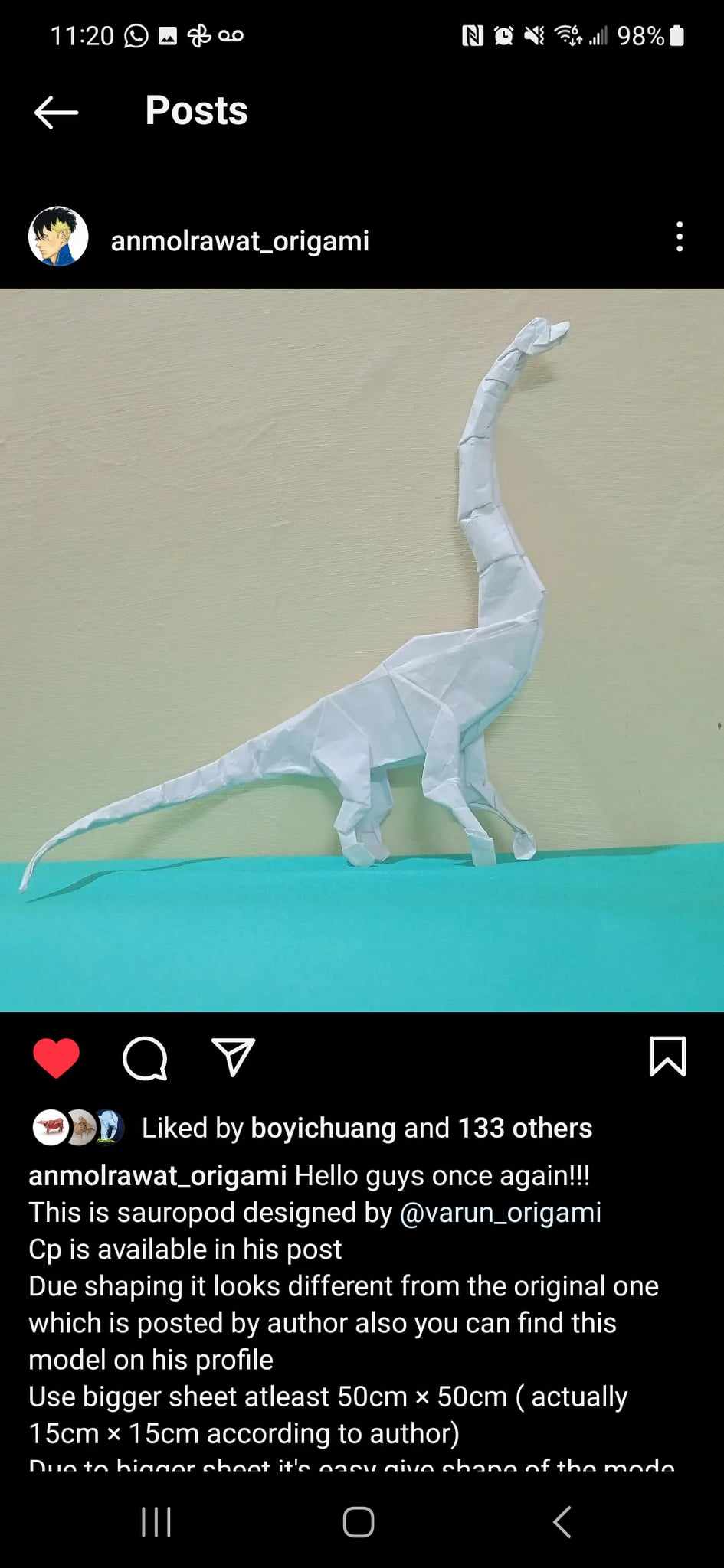
My third origami design was the simple sauropod (pics at more angles on the insta). If you want to fold this, the crease pattern is below.

Here, like with the lizard, I started with a tree diagram and did circle packing through box pleating. In this case, I found I wasn’t quite able to pack box pleating squares sufficiently, so I used a technique called the Pythagorean stretch which is what creates the strange polygonal areas in the pattern. These do add some folding difficulty, but not as much as fully eschewing box pleating.
This model in particular made me think about how origami design fundamentally consists of 2 stages: base design and shaping. When designing a base, you’re mostly thinking about what flaps of paper of what lengths will be present where on the model. Shaping is where you then make small changes to those flaps to make them look more like legs or antennae or heads. Often, the design process focuses more on base design, as this is the more systematic/mathematical portion. Shaping is more about artistry, and is often modified by folder to match their own vision.
Both of my previous designs were very minimally shaped past the base design, and this was mostly true for this one as well. I did find that there was enough paper in the back to open it up and lend a 3d quality to the model. However, one other person who folded my design ended up choosing to keep the model more 2d and add much more details in shaping, aided by using a much larger sheet of paper:

This was a great demonstration of how fruitful shaping can be, and how much potential there can be in even a relatively simple base like the one I created!